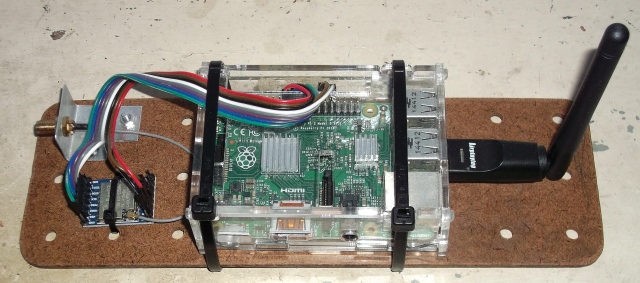
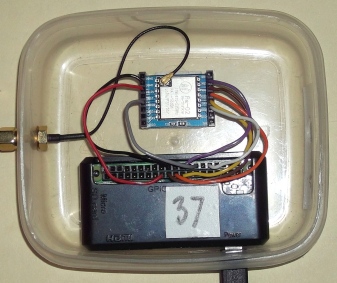
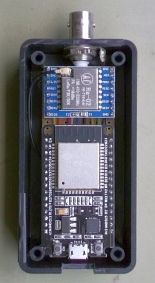
I became interested in tracking Amateur HABs in 2019: it proved to be a fascinating area of the hobby, combining weak-signal reception, sophisticated coding and even meteorology.
Most flights just report their position, altitude and some telemetry, but others send back
live pictures from the edge of space.
UK-based flights operate in the 434MHz ISM band (as 70cm Aeronautical Mobile is not permitted), using just a few milliwatts from "Low-Power Device" transmitters. But even at this QRPP, ranges of hundreds of kilometres can be achieved over line-of-sight paths: I can easily receive flights over the South of England once they reach a few thousand metres altitude.
Some flights use a 2-level FSK modulation similar to RTTY, but sending 7 or 8-bit ASCII data consisting of flight telemetry or even encoded "SSDV" pictures. But recently, a growing number of "pilots" have adopted the
LoRa system, which gives excellent performance using compact low-cost hardware.
Most flights from continental Europe now use the
Horus Binary 4FSK modulation, which gives excellent performance at low SNRs.
There are two types of flights:
On UHF, I use a 70cm beam (7 or 12-ele), mounted vertically-polarised and fitted with a masthead amplifier. However Jack G8HIK just uses his 70cm colinear and a RSP or RTL SDR.
For FSK reception, I use my Yaesu FT897 receiver, connected to the soundcard of a PC running
FL-DIGI for the older RTTY payloads, or
HorusGUI for the new "Horus Binary" 4FSK trackers.
Then for LoRa balloons, I have built simple standalone receivers from a LoRa board connected to
a Raspberry Pi2B or Pi Zero 2W running the HAB Gateway program
or to an ESP32 running the LoraBluetooth code:



This is the complete receiver, which just needs the antenna and a WiFi connection. I operate the Pi via a VNC console, or using M0RPI's "HAB Base" program. This program can also link with a USB-connected LoRa board, such as the TTGO (which G8HIK uses) or my ESP32 unit, or even to a PC running FL-DIGI for RTTY.
The decoder programs automatically forward all their received data onto the SondeHub server, for display on the map, or the SSDV picture gallery.
Most UK-based flights take place during the summer months, and some are announced beforehand on
this forum.
But when the prevailing wind is from the East, we also get European flights coming this way. On one of these in January 2024, I was the only tracking station in range for a while, as it flew over North Wales and out across the Irish Sea:
When there are no flights over the UK, for practice I sometimes use a remote WebSDR receiver to pick up the FSK audio from a flight over Europe and decode the signals on my PC:
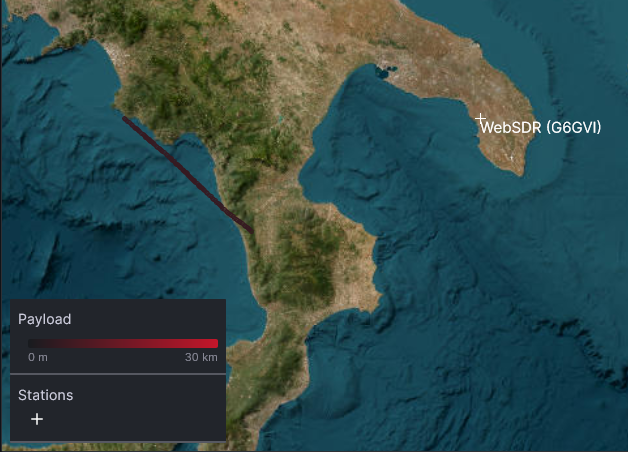
In July 2024 I managed to receive telemetry and picture data from a HAB flight on 869MHz launched by Dave in Ross-on-Wye, carrying "Babbage the interpid bear-onaut" up above 143,000ft! I used a home-built 9-ele yagi and an old TTGO LoRa board, connected by USB to a PC running HAB Base. I was one of only seven receiving stations on this band - see the Grafana plots for this flight.
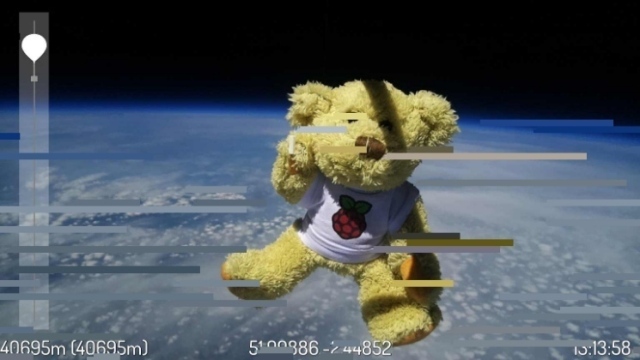
Then the following month I received some APRS transmissions using 1200 baud AFSK-FM on 432.5 from German balloon DL0UJ flying at 35km above the English Channel. I used the DireWolf soundcard modem to decode and upload on this mode:

In December 2024 I was able to track a 4FSK flight from DG4CG for more than 18 hours. It had an unusual trajectory: floating at 7km altitude all the way from Bavaria towards the UK, then being blown back out over the North Sea. Its beacon was alternating between two frequencies (434.714 & 437.6), so I used my "VFO hopper" program to catch all its transmissions.
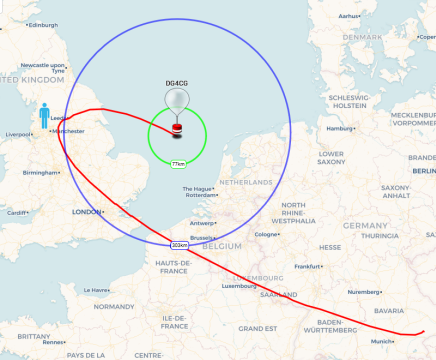
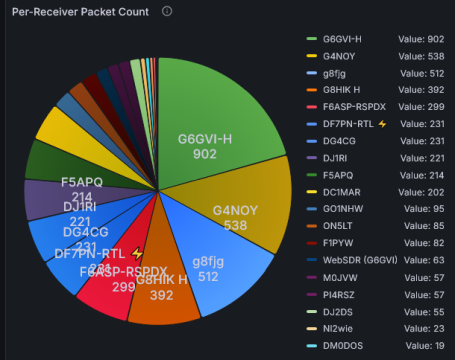
Just a week later, I caught another German pico-balloon flying across Northern England, this time from the West. It was transmitting LoRa APRS on 433.775, which is why so few stations heard it (almost all the UK iGates are on 439.9125).
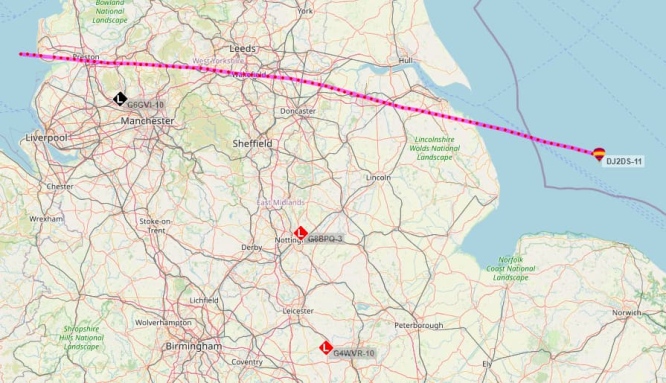
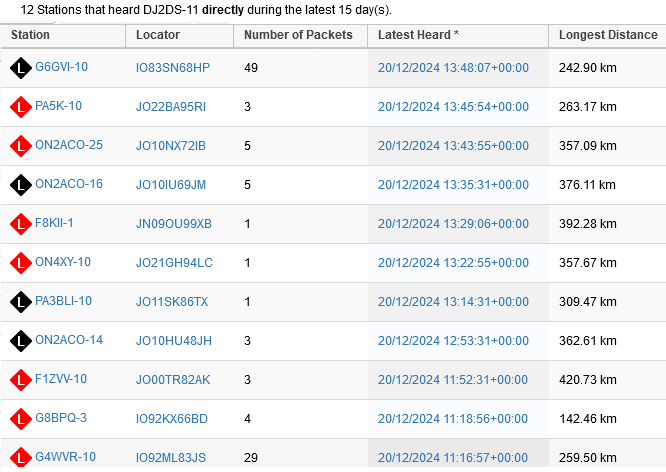
Now that airborne operation in the 2m Amateur band is permitted in the UK (only since February 2024), we're also seeing a few pico-balloons sending APRS on 144.8 AFSK too. Some of the SP0LND series include this facility, in addition to LoRa APRS on 70cm.
Keep a watch on the Amateur SondeHub map and look out for any flights heading your way!